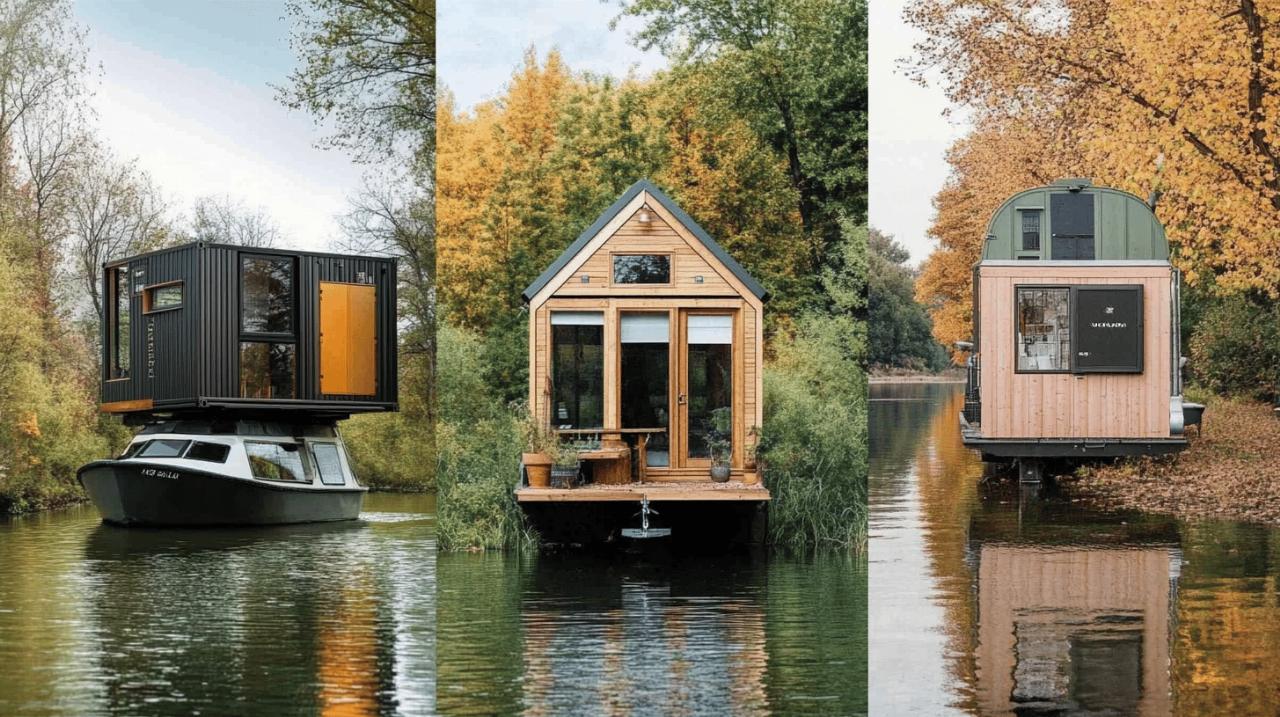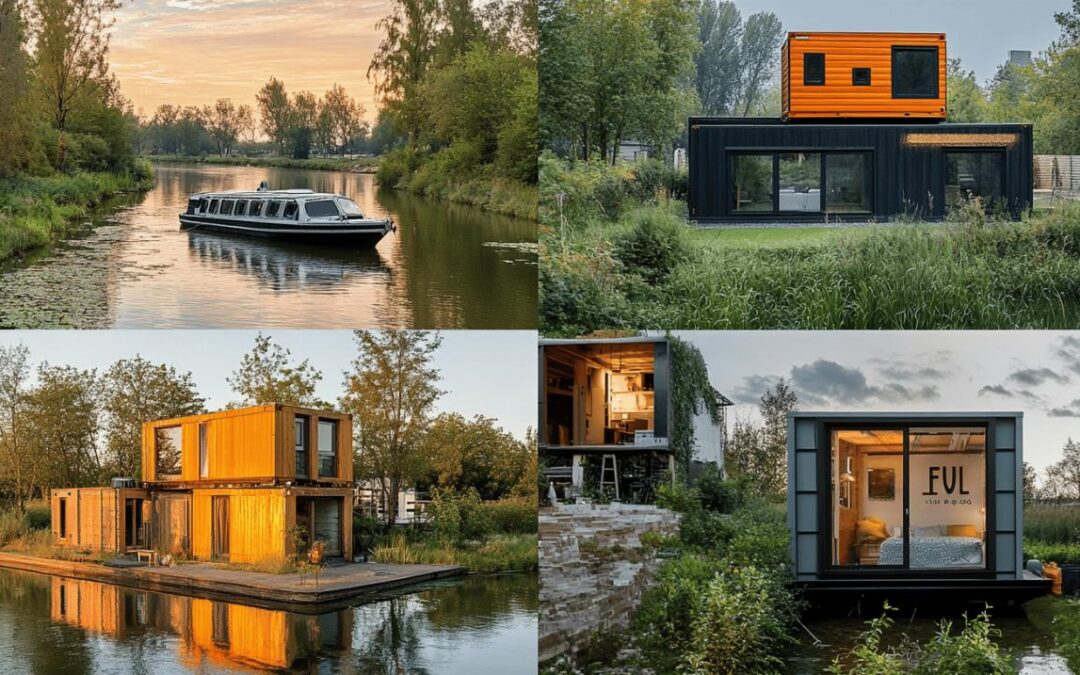The appeal of unconventional dwellings
As traditional property markets become increasingly unaffordable in many regions across the world, people are turning to alternative housing solutions that offer both financial relief and lifestyle enhancement. The quest for affordable living spaces has sparked interest in unconventional dwellings that challenge our perception of what constitutes a home. According to recent information from Domus Agency, which regularly reports on innovative property trends, these alternative housing options are gaining traction among those seeking financial freedom and unique living experiences.
Breaking away from traditional property markets
The conventional path to homeownership has become unattainable for many, especially in urban centres where property prices continue to soar beyond reach. This financial barrier has prompted a creative rethinking of housing possibilities, giving rise to options that were once considered niche or unusual. People are increasingly willing to trade traditional conveniences for the benefits of alternative living arrangements, whether that means residing on water or investing in renovation projects in remote villages.
Lifestyle changes driving alternative housing choices
Beyond economic considerations, significant lifestyle shifts are fueling the movement toward unconventional homes. Many individuals are seeking greater connection with nature, more sustainable living options, and freedom from the constraints of traditional mortgages. The appeal of mobility, reduced environmental footprint, and the opportunity to participate in unique communities has made alternatives like houseboats and extremely affordable renovation projects increasingly attractive options for those willing to embrace a different way of life.
Living on water: the houseboat experience
Living on water represents one of the most fascinating alternatives to conventional housing. In countries like the United Kingdom, France, Germany, Belgium, and especially the Netherlands, houseboat communities are thriving. The Netherlands, with over 3,800 miles of canals and waterways, has become a pioneer in water-based living innovations, partly due to geographical necessity as one-third of the country lies below sea level. Ijburg, near Amsterdam, hosts Western Europe's largest floating community, featuring homes constructed on concrete tanks designed to float and adapt to changing water levels.
Practical aspects of houseboat ownership
Owning a houseboat involves unique considerations that potential buyers must carefully evaluate. Unlike traditional homes, houseboats require specific maintenance routines including regular hull inspections, electrical and plumbing checks, and waterproofing assessments. Prospective owners must decide whether to remain stationary at a permanent mooring or adopt a more nomadic lifestyle, moving along waterways. The United Kingdom alone offers 2,200 miles of navigable waterways, supporting a houseboat community of approximately 10,000 residents in London. Living on water fosters a strong sense of community among like-minded individuals and provides an unparalleled connection to nature, with the gentle rocking of water and wildlife at your doorstep.
Financial considerations for waterborne homes
The financial appeal of houseboat living is substantial when compared to traditional property options. In the Netherlands, floating homes in Ijburg cost around €500,000 for 160 square metres, which represents good value compared to Amsterdam apartments. More modest options exist elsewhere, with some older 40-foot barges available for as little as €10,000 to €12,000, though renovation costs must be factored in. A 47-foot narrowboat in the UK might cost approximately £25,000, while a 55-foot wheelchair-accessible Dutch house barge could be found for €49,500. Beyond the purchase price, ongoing expenses include mooring fees, which vary dramatically by location. Long-term moorings in the UK start at about £2,000 annually, while prime spots in central London command around £1,000 monthly. Maintenance costs typically run about 10% of the vessel's value each year, covering surveys, painting, and general upkeep, totalling between £1,000 and £3,000 annually or more.
The €1 home phenomenon explained
The concept of homes priced at just one euro has captured global attention as an extraordinary opportunity for affordable property ownership. This initiative emerged from Italy's struggle with depopulation and has since spread to various regions facing similar challenges. The first €1 house project in Italy began in 2017, according to Domus Agency, and has evolved into a broader movement to revitalise struggling rural communities. Despite the attention-grabbing price tag, these schemes involve more complex arrangements than the headline suggests, with buyers committing to substantial renovation projects and community investment.
Locations offering euro homes and why
Italy stands at the forefront of the €1 home movement, with approximately 73 towns having launched or adopted some version of this model. This initiative responds directly to Italy's demographic crisis, with the population expected to decline by 2 million by 2040 and at least 4 million by 2050. The country's birthrate has reached an all-time low, leaving nearly 30% of homes unoccupied in many rural areas. In Sardinia, where roughly 20% of residents live below the poverty line, towns like Sedini have initiated €1 house campaigns to attract new residents. The island even offered a €15,000 bonus in 2022 for people relocating there. Success stories include Mussomeli in Sicily, which has sold over 125 houses since 2017, bringing approximately €7 million to the local economy. Similar schemes have appeared in other countries, including properties in La Línea de la Concepción, Cádiz, Spain, as communities seek creative solutions to economic decline.
Hidden costs and renovation requirements
The remarkably low price of €1 comes with significant strings attached, making these properties less of a bargain than initially appears. Buyers typically must commit to renovating the property within a specified timeframe, usually a few years. These homes are often in states of serious disrepair, requiring substantial investment to make them habitable. The renovation costs frequently exceed the value of the finished property in purely financial terms, though the lifestyle benefits may compensate for this imbalance. Additionally, due to high demand, the final purchase price often exceeds the advertised €1 through competitive bidding or administrative fees. Prospective buyers should carefully consider these hidden costs, alongside the challenges of renovating a property that may be in a remote location with limited access to contractors and materials. Despite these challenges, the opportunity to own a piece of history in a picturesque setting continues to attract adventurous buyers seeking an alternative to conventional property markets and willing to embrace the unique lifestyle these communities offer.

